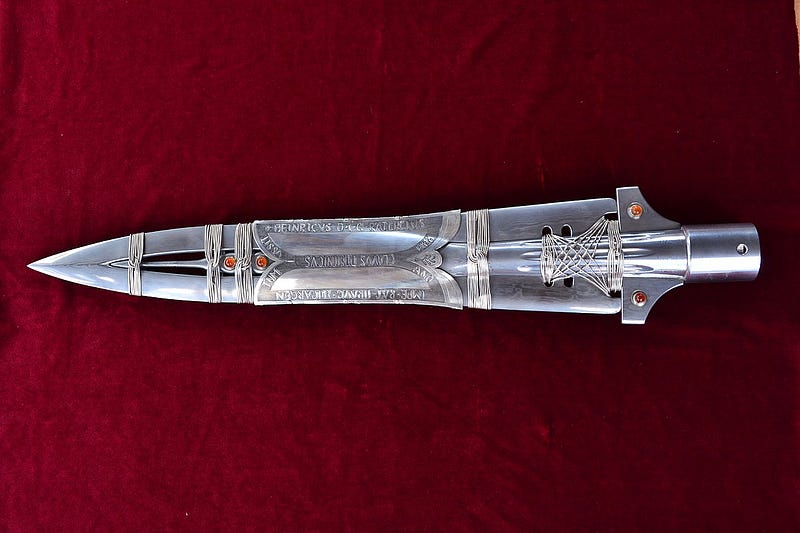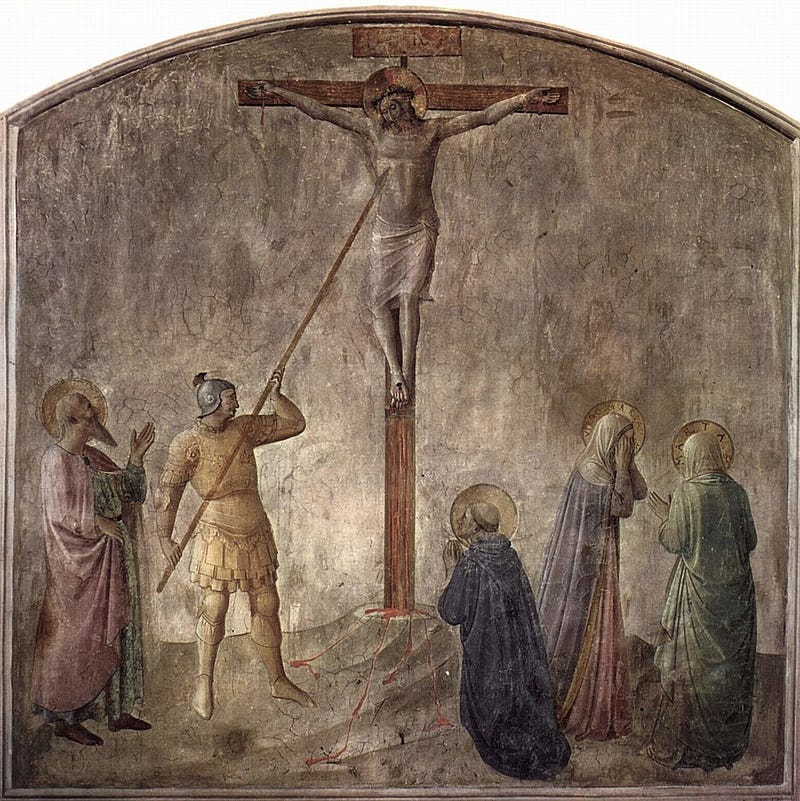The Enigmatic Spear of Destiny: History and Significance
Written on
Chapter 1: The Relic's Importance in Medieval Society
In medieval times, relics held tremendous value, and among them, the Spear of Destiny was regarded as one of the most sacred. Was the spear featured in depictions of Christ's Passion truly the same as the one preserved by the emperors in Vienna?

[Photo: Gkost05, CC0, via Wikimedia Commons]
In the comedic film “Monty Python and the Holy Grail,” King Arthur queries French knights atop castle walls about joining his quest for the Holy Grail. Their dismissive response is that they already possess such a chalice. A parallel situation occurred when Byzantine Emperor Alexios I received the Holy Lance from Raymond of Toulouse, a notable figure from the First Crusade. However, Alexios's excitement was tempered, as he already had one in his possession.
Every noble crusader returned home with a prized relic, with those believed to have touched Christ's blood holding the highest esteem. Throughout the Middle Ages, numerous rulers, including King Alaric the Bold of the Visigoths, Emperor Constantine, Charlemagne, and the leaders of Venice, claimed to possess the spear that pierced Christ's side. Yet, as the number of these spears grew, questions about their authenticity lingered. Historians and enthusiasts alike continue to seek answers to this enigma.
Legends Surrounding the Spear of Destiny
The semi-legendary, semi-documented tale of the Holy Spear begins with the account in the Gospel of St. John, stating:
"But when they came to Jesus and saw that He was already dead, they did not break His legs, but one of the soldiers pierced His side with a spear, and immediately blood and water came out."
It was the Roman soldier Longinus (whose name appears in the apocryphal Gospel of Nicodemus) who confirmed Jesus's death with this act. According to later apocryphal texts, Longinus converted to Christianity and met a martyr's end. The fate of the lance after this event remains uncertain, with another martyr, St. Maurice, often associated with it.
Another significant mention involves Saint Helena, mother of Constantine the Great. In 325 AD, during her pilgrimage to Jerusalem, she is said to have discovered not only the True Cross but also the lance and a nail from it. The Spear of Destiny reportedly remained in Jerusalem until the 7th century before it was taken to Byzantium. By the early 13th century, it made its way to France, though its whereabouts were lost during the revolution. It is possible that the spear Emperor Alexios “already had” was indeed the same one offered by Raymond.

[Photo: Fra Angelico, Public domain, via Wikimedia Commons]
Current Locations of the Spear of Destiny
Today, at least four locations claim a connection to this extraordinary relic. The first is the Krakow Cathedral on Wawel Hill, which houses a replica gifted to Bolesław I the Brave by Emperor Otto III in 1000 AD. The second is Geghard Monastery in Armenia, dating back to the 12th century, where, according to tradition, the spear brought by St. Jude Thaddeus was kept.
The Vatican holds another relic, which is tied to a tale involving Sir John Mandeville, who, in his 1357 travelogue, claimed to have seen the spearhead across the Bosporus, despite having seen a different one in Paris. While Mandeville's accounts may blend fact with fiction, it is believed that this Byzantine relic passed into Turkish hands and was eventually sent to Pope Innocent VIII in 1492, where it remains in St. Peter’s Basilica, though its authenticity is not strongly asserted by the Church.
The final location is Vienna, where the specimen in the Hofburg Museum is regarded as the "most authentic," playing a significant role in modern European history.

[Photo: Jean Colombe, Public domain, via Wikimedia Commons]
The Cultural and Political Symbolism of the Spear
The Spear of Longinus first appeared in documented history as a gift from Pope Leo III to Charlemagne, though the details of its journey to the Pope remain unclear. German king Henry I the Fowler was determined to acquire it, eventually succeeding by trading part of Swabia with King Rudolf of Burgundy. The spear brought Henry numerous victories, including defeats against the Hungarians, and he later passed it on to his son Otto, believing it would grant him divine favor.
In those times, the intertwining of politics and religion elevated the "lancea sacra" to a symbol of divine authority, representing both power and the moral legitimacy of rulers. Its significance was so high that Bolesław the Brave received a replica of this revered relic from Otto III. Over the centuries, emperors and popes have exploited the lance’s symbolic potential.
Before the Reformation, the second Friday after Easter was celebrated as the Feast of the Lord’s Lance, first in Prague and later in Nuremberg. During this occasion, the lance was displayed for public veneration, often accompanied by a nail placed in its spearhead. However, as the importance of royal insignia waned, by the 18th century, the lance began to be viewed more as a museum piece than an object of worship. Concerned about Napoleon Bonaparte's ambitions, the lance was removed from Nuremberg and hidden in Vienna's Hofburg treasury.
The most troubling chapter in the lance's history is linked to Hitler, who recognized the powerful symbolism of the "lancea sacra" and sought to harness it for Nazi ideology. Following the Anschluss in 1938, he ordered its relocation from Vienna to Nuremberg, intending it to symbolize the unity and strength of the German nation. After the war, it was returned to Vienna by American forces.

[Photo: Falk2, CC BY-SA 4.0, via Wikimedia Commons]
Is the Spear of Destiny Authentic?
Unfortunately, modern archaeology casts a skeptical light on many alluring myths. The spear in Vienna is certainly not the one used by Longinus; it dates back only to the 8th century during the Carolingian period. This revelation can be difficult for some to accept. Austrian scholar Erik Szameit has suggested that some metal components of the lance might be older and may trace back to Roman times, given the spearhead's various repairs and modifications.
Interestingly, support for this notion has emerged from the British Isles. Metallurgist Robert Feather, after conducting X-ray and fluorescence analyses, indicated that while the blade appears to be medieval, the dimensions and design of the iron nail bear remarkable similarities to those utilized by the Romans in the 1st century AD. Thus, he did not completely dismiss the possibility that it might have originated from the cross on which Christ was crucified.
The first video titled "The Mystery of the Holy Lance | Full Historical Documentary" explores the historical context and significance of the Spear of Destiny.
The second video, "The Mystery Of The Holy Lance Used In Jesus' Crucifixion," delves into the spear's legendary past and its connections to Christ's crucifixion.
Attention All Readers!
As content creators on Medium.com, we face minimal compensation for our hard work. If you find value in my articles, please consider supporting me on my “Buy Me a Coffee” page. Your small contributions can make a significant difference in fueling my passion for creating quality content. Thank you for your support!

